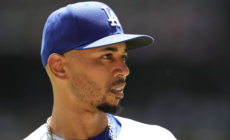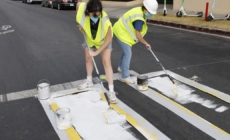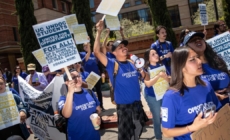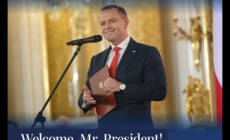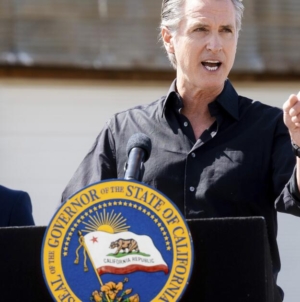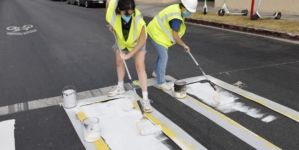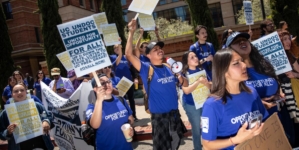-
2025 FedEx St. Jude Championship Field: Full list of golfers for first leg of playoffs - 25 mins ago
-
Lake Balaton’s Top 10 Ice Cream Shops Revealed - 28 mins ago
-
Dodgers’ Mookie Betts Reveals Surprising Cause for Brutal Slump - 34 mins ago
-
Tired of waiting for the city, Angelenos paint their own crosswalks. Some become permanent. - 41 mins ago
-
Claire’s, a jewelry retailer for teens, files for Chapter 11 bankruptcy - 59 mins ago
-
Wheat Overtakes Corn as Hungary’s Top Crop - about 1 hour ago
-
2025 NFL Odds: Travis Hunter Named Starting WR, Second-String CB - about 1 hour ago
-
California High-Speed Rail Project Leader Defies Trump - about 1 hour ago
-
UC must reconsider ban on campus jobs for undocumented students - about 1 hour ago
-
President Congratulates His Newly Inaugurated Polish Counterpart - 2 hours ago
RFK’s assassination: An icon, a hotel pantry and an ‘angry nobody’
The assassin concealed himself behind an ice machine in a crowded kitchen pantry of the Ambassador Hotel with an eight-shot revolver. A small, wiry, pockmarked young man with curly hair and a hard-to-place accent, he loitered in the area for hours, asking kitchen workers if his target would be coming that way.
In the Embassy ballroom, Robert F. Kennedy, 42, New York senator and brother of a slain president, had just declared victory in the June 4, 1968, California Democratic primary. The ecstatic crowd chanted, “We want Bobby! We want Bobby!” To study photos of the crowd is to see expressions of unembarrassed love, the kind few candidates inspire.
Kennedy’s admirers revered him as a secular saint, a figure of hope in a brutal, tumultuous decade. But he was despised on the right and divisive on the left. In East Los Angeles, Mexican American crowds had greeted him rapturously; in Van Nuys, his campaign cars were pelted with stones.
In this series, Christopher Goffard revisits old crimes in Los Angeles and beyond, from the famous to the forgotten, the consequential to the obscure, diving into archives and the memories of those who were there.
Assassinations had already left an indelible blight on the decade. John F. Kennedy was killed in 1963. In 1965, it was Malcolm X.
In April 1968, when Martin Luther King Jr. was killed, it fell to Robert F. Kennedy to break the news to a largely Black crowd in Indianapolis. He spoke of the “stain of bloodshed that has spread across our land,” and of the possibility of compassion. He said a white man had killed his brother. He quoted Aeschylus, his favorite poet.
Scores of cities exploded into rioting, in the wake of King’s murder. Indianapolis did not, and Bobby Kennedy’s admirers did not think it irrelevant that he had been there.
Shaking hands with kitchen workers, Kennedy waded through the Wilshire Boulevard hotel in the first minutes of June 5, headed to the Colonial Room to talk to reporters. The pantry was a shortcut.
Later, his staffers would say the campaign did not want their candidate seen among uniformed LAPD, who were poisonous to voters they needed, particularly after the Watts riot of three years earlier. His protection was a thin scrim of hotel security and rent-a-cops hired for crowd control.

Kennedy volunteers and supporters celebrate inside the Ambassador Hotel on the night of the California primary, June 4, 1968. It would be Robert F. Kennedy’s biggest political triumphHe narrowly defeated Sen. Eugene McCarthy in the California primary, which Kennedy had said he needed to win to keep his presidential campaign alive.
(Los Angeles Times)
***
The journalist Pete Hamill had encouraged Kennedy to run for president, writing, “If you won, the country might be saved.” Owing to JFK’s death, he perceived an air of “almost permanent sadness” in Kennedy’s eyes.
That night, he accompanied Kennedy as he moved through the Ambassador pantry, which he described it as “a long grubby area…the sort of place where Puerto Ricans, blacks and Mexican-Americans usually work to fill white stomachs.”
Kitchen workers pressed forward to touch him. Then the gunman emerged — a messenger, Hamill wrote, “from the secret filthy heart of America.” Hamill saw him with his right foot forward and his right arm extended, firing.

Robert F. Kennedy lies on the floor at the Ambassador Hotel in Los Angeles moments after he was shot in the head. He had just finished his victory speech upon winning the California primary.
(Boris Yaro/Los Angeles Times)
Two .22-caliber bullets hit Kennedy in the back and a third entered behind his right ear, fragmenting in his brain. An Associated Press reporter said the shots sounded “almost like a brief burst of machine-gun fire.”
Rosey Grier, a hulking defensive tackle for the Los Angeles Rams who was in the crowd, rushed in to pin the gunman against a serving table. “Get the gun, get the gun!” people screamed, but the gunman managed to empty his eight-shooter. Five bystanders were hit but not fatally.
Some were yelling for instant vigilante justice, while others cried, “Don’t kill him! No Jack Ruby!” Already haunting the scene was the dread of a reprise of Dallas, where Ruby gunned down Lee Harvey Oswald, JFK’s assassin.
Now the younger Kennedy, fatally wounded, lay beside the ice machine on the dirty floor. Somebody put rosary beads in his hands, and his wife, Ethel, mother of his 11 children, touched ice cubes to his cheek.
***

Sirhan Sirhan is taken by officers into court for arraignment hours after the shooting of Sen. Robert F. Kennedy at the Ambassador Hotel in Los Angeles.
(Los Angeles Times)
The gunman refused to identify himself at first, and police could not place his accent. He was arraigned as “John Doe” in an early-morning courtroom session convened without advance word to the press or public, with the goal of avoiding “another Dallas.”
His name was Sirhan Bishara Sirhan, 24, an identity confirmed because he left his fingerprints with a job application at Hollywood Park racetrack. A Jordanian who immigrated to the States at 12, he lived with his mother in a white-frame house in Pasadena.
His life had been a chronicle of failures and accumulating resentments. He’d failed out of Pasadena City College. He’d found a job at a health food store, but couldn’t keep it. He’d tried to be a jockey, but horses kept throwing him. He’d been reduced to the low-status task of walking the horses, but he couldn’t keep that job either.
Sirhan frequently expressed “anti-Jewish feelings,” acquaintances told The Times, and his supreme hatred was the existence of the state of Israel. Kennedy, who had reported in British Palestine for the Boston Post in his early 20s, had become a stalwart supporter of the Jewish state and in a recent interview had proposed selling it 50 Phantom fighter jets.
In one of his notebooks, Sirhan had written, “Kennedy must be assassinated before June 5, 1968.” That was the one-year anniversary of the start of the Six-Day War in which Israel had defeated a coalition of Arab armies. Sirhan had missed his timeline, as it happened, by just a few minutes.
“RFK must be disposed of like his brother was,” Sirhan wrote in a journal found by investigators, a theme he stressed in many scribbled notes. “Robert Fitzgerald Kennedy must soon die die die die die die die die die die.… My determination to eliminate RFK is becoming more the more (sic) of an unshakable obsession…. Robert F. Kennedy must be assassinated assassinated assassinated assassinated.”

Sirhan Sirhan being escorted by his attorney, Russell E. Parsons, from Los Angeles County jail chapel to enter a plea to a charge of murder in Los Angeles in June 1968.
(George Brich / Associated Press)
At his trial, Sirhan’s legal team did not dispute that he had killed Kennedy and said he acted alone. Their goal was to spare him the death penalty by convincing jurors it was second-degree murder. It was the act of an “immature, emotionally disturbed and mentally ill youth” who had killed in a trancelike state, said defense attorney Emil Berman.
He had been traumatized by the sight of political violence as a child, the attorney said, and news of the Arab-Israeli conflict unleashed blinding rage. “In his fantasies, he was often a hero and savior of his people,” Berman said. With the trial in headlines worldwide, the Palestine Liberation Organization distributed posters of Sirhan praising him as “a commando, not an assassin.”
Sirhan’s angry outbursts became a regular feature of the trial. He was enraged at the release of his notebooks, of his poor school grades, of his 89 score on an IQ test. At one point, he announced he wanted the gas chamber. “I killed Robert F. Kennedy willfully, premeditatedly, and with 20 years of malice aforethought,” he told the court, later explaining it was a reference to the 1948 birth of Israel.
Taking the stand, Sirhan testified that he could change the color of a candle flame with the power of his mind. He said he not remember committing the shooting. He said he’d been drunk. He delivered a screed on the history of the Middle East, telling his attorney, “Zionism is more inimical to me than communism is to you.”
Defense psychiatrists said Sirhan suffered paranoia and social maladjustment, that he viewed Kennedy as a surrogate for the father who had abandoned him, and that mirrors at the Ambassador Hotel might have initiated his homicidal trance.
Prosecutor Lynn Compton ridiculed the claims.
“If you don’t buy it, like I don’t buy it,” he told jurors, “then there’s nothing left but plain old cold-blooded first-degree murder.”
Jurors convicted him and gave him death, a sentence commuted to life in prison in 1972 when the state Supreme Court ruled capital punishment unconstitutional. Sirhan’s release was among the demands a year later, when the Black September terrorist group kidnapped the U.S. ambassador and two other Western envoys in Sudan. (The U.S. refused; the three were executed.)
In a 1989 interview with journalist David Frost, Sirhan again disavowed any conspiracy in Kennedy’s death, suggesting it was at odds with his mistrustful nature; he knew how a collaborator could easily become a witness against him. He claimed to feel remorse, while at the same time comparing himself to a Jew who had been given the opportunity to kill Adolf Hitler.
By his 2016 parole hearing, Sirhan’s rhetoric had changed. He was now insisting he had not even done the crime, buoyed by conspiracy theorists positing that he had somehow been hypnotically programmed to fire his gun in order to divert attention from the real shooter.
“Legally speaking, I’m not guilty of anything,” he said.

Sirhan Sirhan reacts during a parole hearing Feb. 10, 2016, at the Richard J. Donovan Correctional Facility in San Diego.
(Gregory Bull/AP)
It was not until 2021, however, that he convinced a parole panel that he should go free, a decision supported by the victim’s third son, Robert F. Kennedy Jr., who is now the U.S. secretary of Health and Human Services.
RFK Jr. described Sirhan’s guilt as “a fiction.” He believed a security guard had done it, perhaps as part of a CIA scheme. When he met the 77-year-old Sirhan in prison, he wrote, he found him “gentle, humble, kindhearted, frail and harmless.”
Most of the Kennedy family rejected the plea for parole, as did Gov. Gavin Newsom, noting that Sirhan refused to take responsibility for his crime. His lack of insight made him a continued threat, the governor wrote, and described him as “an ideological lightning rod” who might inspire further political violence.
“Sirhan, one man with a gun, acting alone, inflicted grievous harm to our country,” Newsom wrote.
The Trump administration recently released a cache of classified files on the assassination, and Sirhan’s current attorney, Angela Berry, said a team of researchers is combing them for new evidence. “So far there hasn’t been anything of use,” she said.
The investigative journalist Dan Moldea, who studied the case for years, went into it believing there was a good case for a second gunman but emerged with a book, “The Killing of Robert F. Kennedy,” that meticulously debunked the theories. (One popular theory involved gouges in the pantry walls misidentified as holes from unaccounted-for bullets.) After multiple prison interviews, Moldea came to believe Sirhan was intent on using him.
“I said, ‘Why not admit you did it, instead of this bulls— that you were drunk and don’t remember anything?’ ” Moldea told The Times in a recent interview. “He said to me, ‘Listen, why should I admit guilt when I got you out there coming up with exculpatory evidence saying I didn’t do it?’ ”
Author Mel Ayton, who has written extensively about Sirhan, said the killer was a chronic failure who believed the murder would make him a hero.
“What [Sirhan] thought would be a redeeming feature of his life is his politics, which has been ignored by conspiracy writers,” Ayton told The Times.
He said crackpot theories have found oxygen in historical amnesia: “If there’s no motive, they can promote their idea that he was just an innocent patsy.”
In a forward to Ayton’s new book, “The Making of an Assassin: Why Sirhan Sirhan Murdered Robert Kennedy,” former FBI profiler John Douglas (with Mark Olshaker), describes Sirhan as both “a mentally unstable and angry nobody and a driven, mission-oriented ideologue.”
Well before he did it, Sirhan expressed his plans, not just in writing but in conversation. At the 1969 trial, a Black trash collector named Alvin Clark testified about arguing with Sirhan a few weeks before the California primary.
To Clark, Kennedy was the man who had paid to bring the murdered Martin Luther King Jr.’s body home to his family.
Sirhan said, “I’m planning on shooting him.”
Clark replied, “If you do, you’ll be killing one of the best men in the country.”
Source link


